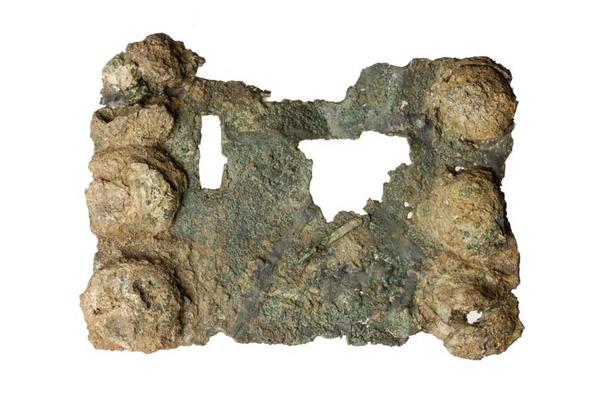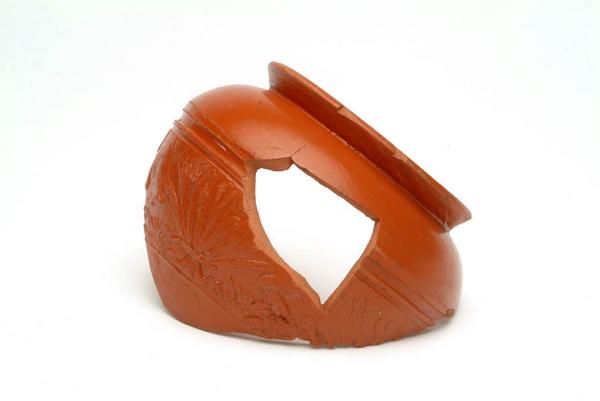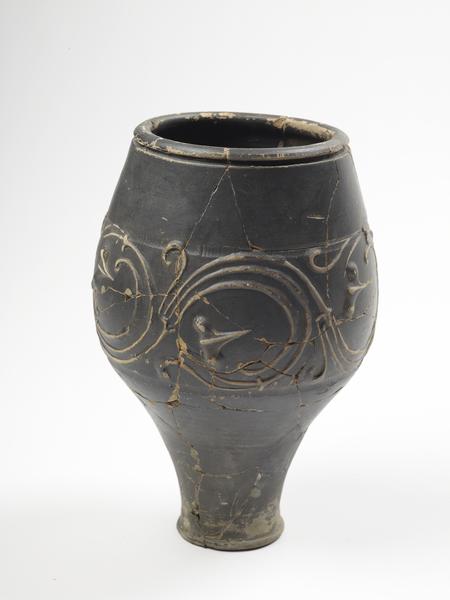26 August 2022 — By Robin Lockyer
Unboxing finds from a 1950s’ excavation site near Orpington
Archive Officer Robin Lockyer delves into 28 dusty boxes from an Orpington dig, piecing together the past from lollipop stick scribbles and lost trinkets. Join his archaeological detective work.
The local museum at the 700-year-old Priory in Orpington had a relatively short but happy life. After a failed funding bid, the borough council was forced into a rethink and decided that a cost of £8 per visitor was too much to bear in difficult economic circumstances. The museum doors were closed. There was local opposition, but not enough to overturn the decision.
A dilemma was – what to do with the archaeological material from several iconic sites? Especially those that couldn’t be accommodated in the new Historic Collections display at the borough's Central Library. So, in 2016, 449 boxes found a new home at the Archaeological Archive at London Museum.
What makes Site RF57 so important?
It fascinated me from the day I started work at the museum around five years later. And I jumped at the chance to go through the material and put them in order so others could access this rich resource.
So, what makes Site RF57 so special?
It was a rescue excavation near Orpington from 1956–1957. In the years leading up to the redevelopment of the site into a school, there had been many prehistoric and Roman finds on the surface.
“This is the earliest evidence of habitation”
Dorothy Cox, Archaeologist, The Book of Orpington (1983)
Archaeologist Dorothy Cox in The Book of Orpington (1983) says about the site: “…remains of an Iron Age farmstead were found. These included corn drying kilns, postholes, storage pits, drainage ditches, a well over 55 feet deep, and pottery on the site dates the farmstead between c50BC – AD50. This is the earliest evidence of habitation …”
Recording the excavation in Orpington
Documenting this site wasn’t going to be straightforward. Excavation and archiving was done very differently back in the day. Collection and recording processes 50 years ago had very different – and sometimes bizarre – standards. Particularly, if it was a rescue excavation.
Today, we use a technique called the Single Context Recording system, breaking each site down into the smallest possible units – called contexts – with each context representing a single event that happened in the past.
For instance, think of a trifle, where each layer (representing a different time period) is a context. So all finds from a single layer will be grouped together and given a unique number – such as RF57/1, /2, /3… – from a sequential register on site. All finds from that deposit will then be associated with only that context/layer.

A Mr A Eldridge with one of many trays of finds from the site.
Each context must then be compared with what’s directly earlier and later. This chronological, or stratigraphic (layers from the bottom, ie, earliest, to the top), relationship can be used to build a matrix – a visual framework that shows the relationship between all contexts in an excavation site and is the basis for understanding the history of any location.
Analysing the archaeological finds (and interesting notes)
Opening the 28 boxes of finds and one small records box from this specific site, my heart sank. It seemed that most of the records were lost at some point and all that was left were some photographs, copies of correspondence and a worn notebook donated by one of the volunteers, Mrs Saunders, in 1971. In addition, there were no contexts, only named features that could no longer be located on a map.
There had been little post-excavation work done, so some of the finds were in their raw state – unwashed and unsorted. There were even a lot of non-archaeological materials such as unstruck flints and stones. We’re much more careful with our collection policy nowadays.

The notebook donated by one of the volunteers, Mrs Saunders, in 1971.
The bags of finds were marked with strange locations that can’t be determined now, notes and drawings on faded pieces of paper, paper bags and flat lollipop sticks.
There were mysterious chocolate boxes, film boxes and aluminium cans for film rolls, which definitely didn’t contain what they said they did. A film box marked with “rings and brooches” was opened with eager anticipation. Inside were only small fragments of glass.
It seems that a brooch was indeed found in a deep well that was excavated by the owner of the notebook, as referred to in the notes. However, this – as well as a finger ring – seem to have disappeared in the years since it was discovered.
The missing elements: Challenges faced during the excavation
The correspondence is interesting – revealing relationship breakdowns, resignations, distrust and obstruction. Someday, this in itself would make a good film (The Dig 2?). It appears that a member of a local archaeological society was given some of the finds on the understanding that they would be taken to the museum. But they ended up in his personal possession until he was persuaded by the threat of legal action to give them up many years later.
There isn’t a full list of finds or records, so it’s not known what they were or what happened to them. Fingers are firmly pointed at various participants. The last known sighting of the brooch seems to have been in 1965, but even that’s uncertain.
While, in her book, Dorothy Cox, calls the site “the earliest evidence of habitation” – that’s not quite true. A group of Palaeolithic hand-axes found on the site (which are also part of the archive) are at least 200,000 years old. And the pottery pushes the date range well into the Roman period (50–410 CE). Frustratingly what could have been an important site with potential to examine the Iron Age to Roman transition now has limited potential.
RF57’s role in understanding local history
There are positives to take from this, though. There are some significant finds from the site, including an almost-complete Terra Nigra bowl with a potter’s stamp and several other potters’ stamps that could be investigated with a collection of pottery. This can tell us something about the Iron Age / Roman London hinterland. And the well photographs, notes and finds can be compared to other similar sites.
The material is now repacked and documented to current archival standards, in strong breathable bags labelled with the site code and some standard information. The special finds are registered and recorded digitally for better access and it will, henceforth, be stored in the best conditions for long-term preservation. This will ensure that present and future generations of researchers will be able to look at this piece of the jigsaw and use it to widen our understanding of the past.
An archivist officer's takeaways
From my own point of view, there are several things that come to life when you open the archive to this site – the thought of Mrs Saunders 55-ft down a well with her notebook, which she graciously donated. The local press photographer in his trench coat and trilby (this is true, there is a photograph of him). Sadly the excavation director died in July 2020. It would have been lovely to speak to her and get the full story.
Not to forget my dream of tracking down that missing brooch. Some day.
Robin Lockyer is Archive Officer, Archaeological Archive at London Museum.




















